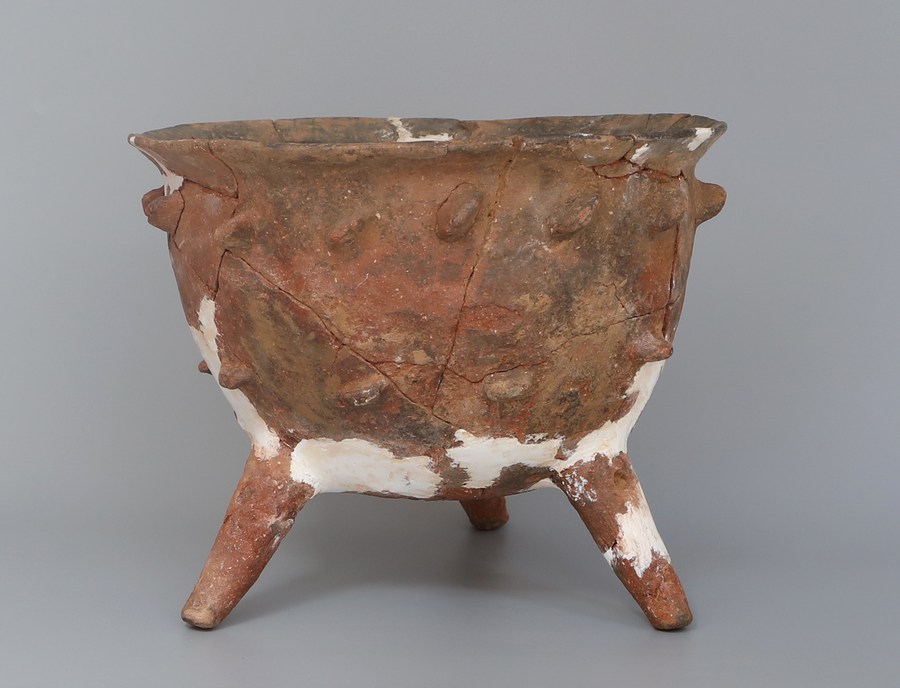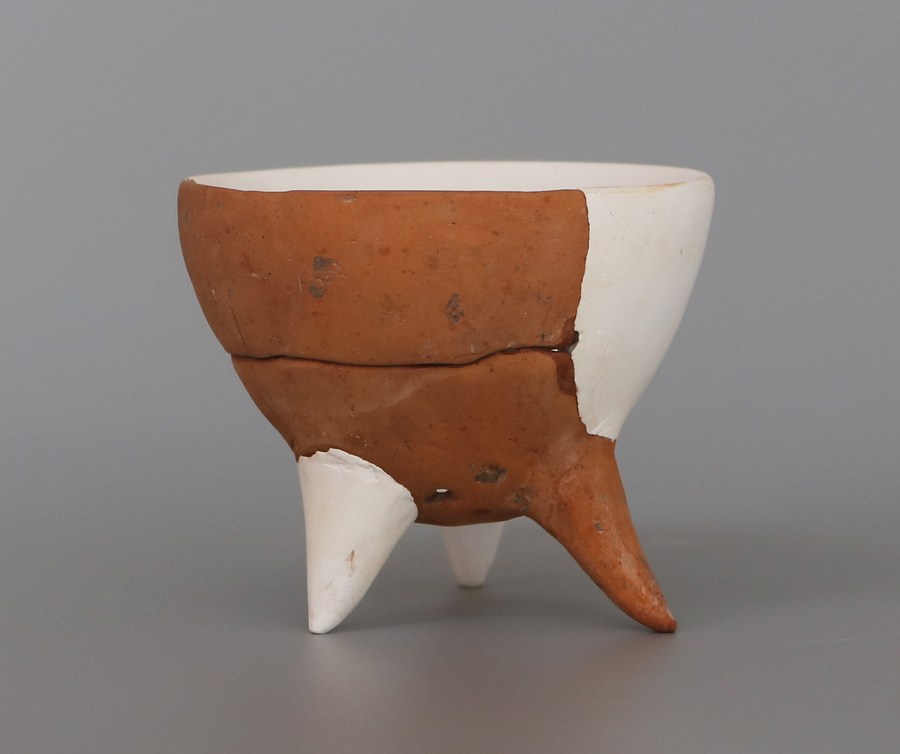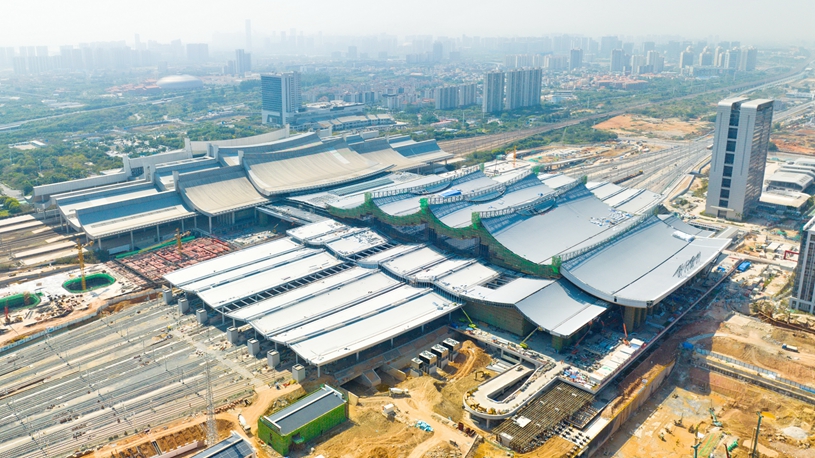
File photo shows a piece of pottery found in the Peiligang cultural site in Xinzheng, central China's Henan Province. (Xinhua)
ZHENGZHOU, March 10 (Xinhua) -- Chinese archaeologists have discovered the ruins of a Neolithic settlement site dating back more than 7,000 years in Anyang City, central China, providing valuable insight into the lifestyle of prehistoric ancestors.
The site is situated in Balizhuang Village and occupies a roughly elliptical area of about 27,000 square meters, measuring approximately 230 meters wide and 150 meters long, according to Anyang city institute of cultural relics and archaeology.
Based on the carbon-14 dating results, the Balizhuang Village site dates back to approximately 7,800 to 7,400 years ago, the middle Neolithic period.
The site has been linked to the Peiligang culture. Peiligang is one of the earliest village ruins in China, dating back about 8,000 years. It provides important evidence for the study of the origin and development of agriculture, pottery making, the textile industry as well as ancient alcohol making techniques.
Archaeologists also found an ancient river channel approximately 100 meters wide on the southwest side of the site. "It is speculated that the ancient residents of the Balizhuang Village site lived along this river," said Shen Wenxi, with the institute. "The entire site is well-preserved, with a rich cultural heritage."
Furthermore, archaeologists discovered prehistoric building materials scattered throughout the site and bases of semi-underground buildings.
According to Kong Deming, the leader of the archaeological team, the discovery of the ruins indicates that the residents of the site had already settled down, offering archaeological insights into the settlement lifestyle of people from more than 7,000 years ago.

File photo shows a piece of pottery found in the Peiligang cultural site in Xinzheng, central China's Henan Province. (Xinhua)
Numerous stone tools were unearthed at the site, including shovels, axes, sickles, grinding stones, and pestles, which had been processed astonishingly nicely, said Kong.
From felling trees to tilling the soil, from harvesting crops to threshing, there were stone tools available for every step of the agricultural production process, fully demonstrating that agricultural production during that time had already entered a new period of hoe-farming.
Additionally, the discoveries of fragmentary skeletons of animals found in the ancient river channel indicate that gathering and fishing were still important means of livelihood for the residents of the site.
"Preliminary observations show that there were mammals such as hogs, dogs and deer, and shellfish, conchs, fish, and we even found some bird bones," said Shen Wenxi, adding that the findings lay the foundation for understanding the production and economic activities of that time.
The Peiligang culture boasted the highest level of development among various mid-Neolithic archaeological cultures, whose migration and expansion caused a series of cultural interactions, driving the evolution and development of surrounding archaeological cultures, Kong told Xinhua.
"It is one of the important sources of Chinese civilization," Kong said.
Ongoing excavation and research are being conducted at the Balizhuang Village site, with further study focusing on the cultural connotations and settlement distribution of the site. ■












